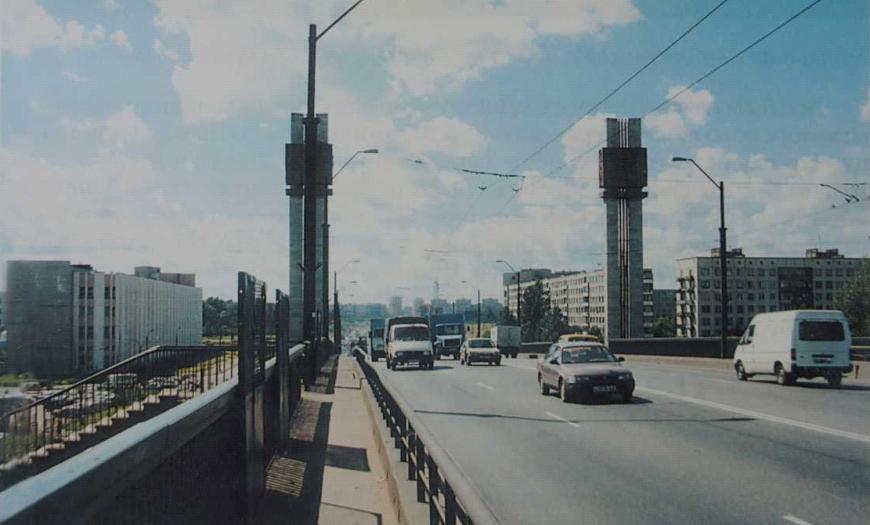In the early 1970s, Lengiprotrans developed a project for the Nevsky overpass, which became part of the Central Arc Highway in St. Petersburg. The overpass connected Slava Avenue with Ivanovskaya Street above the tracks of the St. Petersburg-Sortirovochny-Moskovsky station. This became a significant event for the city, since the construction made it possible to directly connect the Frunzensky and Nevsky districts.
The main difficulty of the project was that the overpass had to cross more than 60 railway tracks. To accommodate the bridge supports, a partial reconstruction of the station was carried out: 6 tracks were dismantled and laid in another place.
The bridge is composed of three parts: an overpass in the middle, passing over the railway tracks, and two sections at the ramps from the overpass, under which garages were placed. The overpass was connected to the platforms of the Sortirovochnaya station by cantilever reinforced concrete and spiral staircases. There are five traffic lanes and two pedestrian sidewalks on the flyover. The length of the structure was 1200 m.
Pylons decorated with bas-reliefs are installed above the carriageway of the flyover. The decoration of the bas-reliefs is dedicated to the Obukhov defense of 1901 and the breakthrough of the blockade of Leningrad in 1943. The first event took place on the territory of the current Ivanovskaya Street, and the liberation of Leningrad continues the theme of Glory Avenue. The architectural solution of the overpass was marked with a diploma of the Leningrad City Executive Committee.
In 1974 the Nevsky overpass was put into operation. At that time, it was the longest overpass of this type in the Soviet Union.
Author's department:


